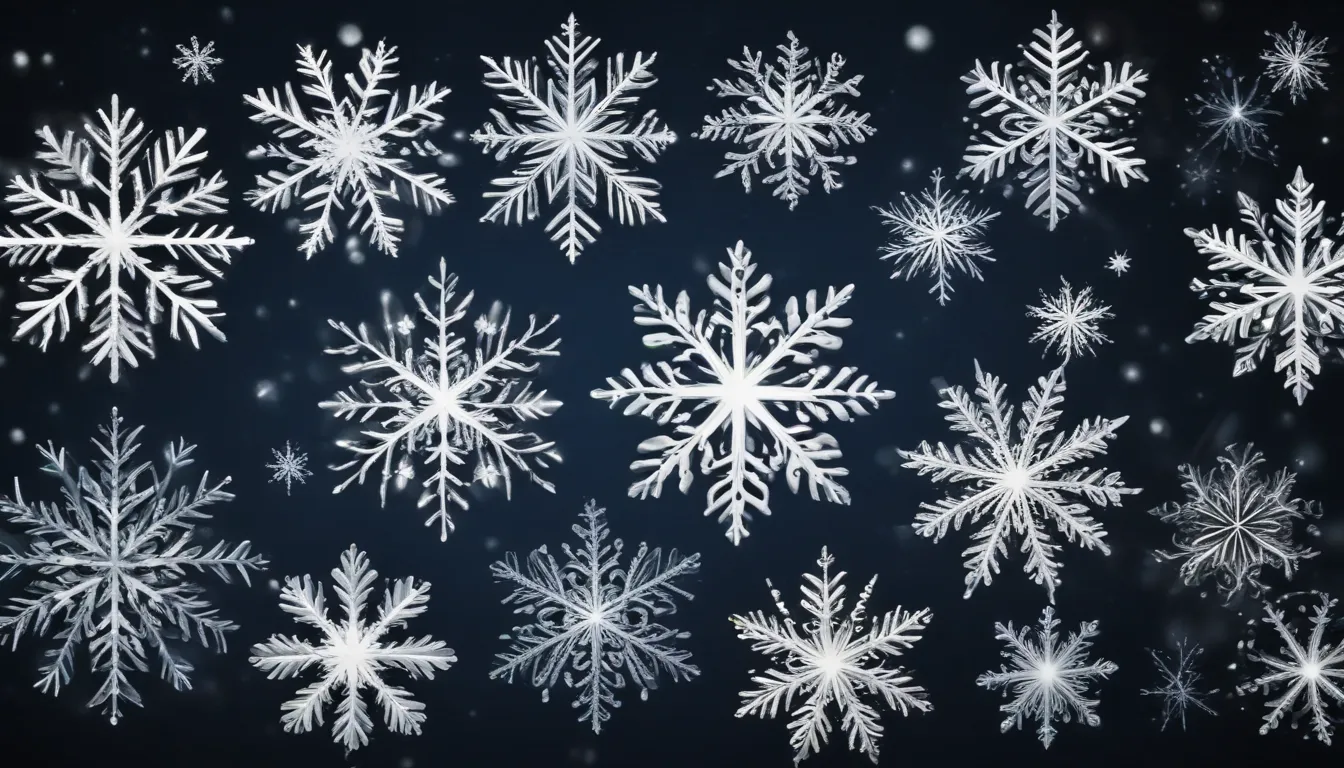The pictures we use in our articles might not show exactly what the words say. We choose these pictures to make you interested in reading more. The pictures work together with the words but don’t take their place. The words still tell you the important facts.
As winter settles in and snow blankets the ground, it's the perfect time to explore the enchanting world of snowflakes. These delicate creations of nature hold a world of complexity within their unique shapes and structures. From their intricate patterns to their incredible diversity, snowflakes have captured the imagination of both scientists and dreamers alike. In this article, we'll delve into nine astounding facts about snowflakes that will leave you in awe of their beauty and complexity. So, bundle up, grab a hot cup of cocoa, and join us on a journey through the mesmerizing world of snowflakes.
Key Takeaways:
- Snowflakes are unique ice crystals with intricate hexagonal structures, and no two snowflakes are alike due to their complex formation process. They can vary in size, color, and have six arms, making them truly fascinating and beautiful.
- Snowflakes start their journey high in the Earth’s atmosphere, forming when water vapor freezes onto tiny particles in the clouds. They are delicate and transparent when untouched, but quickly melt on contact with warmer objects, such as your hand.
A Unique Crystal Structure
Snowflakes are not just frozen water droplets — they are intricate ice crystals with a unique hexagonal structure. Each snowflake is composed of countless ice crystals that form under specific temperature and humidity conditions, resulting in their beautiful and symmetrical shapes.
No Two Snowflakes Are Alike
It's often said that no two snowflakes are alike, and it's true! Due to the complex formation process, each snowflake develops its own pattern and shape. With billions of snowflakes falling every winter, the chances of finding an identical pair are incredibly slim.
Snowflakes Can Have Different Sizes
Snowflakes can vary in size based on the temperature and humidity levels in the atmosphere. Warmer temperatures tend to produce larger snowflakes, while colder temperatures result in smaller, more delicate flakes. From tiny snow grains to large fluffy crystals, the size of snowflakes adds to their charm and beauty.
Snowflakes Can Be Colorful
While snowflakes are traditionally associated with being white, they can actually exhibit various colors. The phenomenon known as “sun dogs” or “diamond dust” can refract light through ice crystals, causing snowflakes to appear pink, purple, or even iridescent.
Snowflakes Are Six-Sided
One of the most fascinating aspects of snowflakes is their consistent hexagonal shape. The intricate pattern arises from the unique arrangement of water molecules when they freeze. This natural symmetry is what gives snowflakes their mesmerizing and intricate design.
Every Snowflake Has Six Arms
Although snowflakes differ in intricate details, they all share a common feature — they have six arms or branches. Each arm develops as water vapor freezes onto the central ice crystal, resulting in the distinct six-sided structure that we associate with snowflakes.
Snowflakes Form in the Clouds
Snowflakes start their journey high in the Earth’s atmosphere. They form when water vapor freezes onto tiny particles in the clouds. These frozen particles then grow and combine with others to create the complex structure of a snowflake before finally falling to the ground.
Untouched Snowflakes Are Transparent
When snowflakes first fall from the sky, they are transparent and virtually invisible to the naked eye. It is only when they accumulate and reflect light that they appear white. The unique crystal structure of snowflakes allows them to reflect and scatter light, creating the glistening effect we often associate with snow.
Snowflakes Melt on Contact
While snowflakes are beautiful to behold, they are also delicate. When a snowflake comes into contact with a warmer object, such as your hand, body heat causes it to melt quickly. This is why snowflakes tend to disappear as soon as they touch a surface.
Conclusion
In conclusion, snowflakes are truly fascinating and unique natural phenomena. Their intricate and delicate designs, formed through a complex process of solidification and crystallization, never cease to amaze us. From their incredible diversity to their role in weather patterns, snowflakes hold a special place in the hearts of many people, particularly during winter time. So the next time you find yourself gazing at a snow-covered landscape or catching a snowflake on your glove, take a moment to appreciate the beauty and complexity of these tiny frozen wonders.
FAQs
Q: Are all snowflakes shaped like a six-pointed star?
A: No, not all snowflakes are shaped like a six-pointed star. While the six-sided design is the most common, snowflakes can also have four, eight, or even twelve sides.
Q: Why are snowflakes always symmetrical?
A: Snowflakes are symmetrical because they form through a process called crystallization, where water molecules arrange themselves in a hexagonal lattice structure. This arrangement results in symmetrical patterns in the crystal growth, leading to the symmetrical shape of snowflakes.
Q: How long does it take for a snowflake to form?
A: The time it takes for a snowflake to form can vary depending on the temperature and humidity of the atmosphere. On average, it takes about 15 to 45 minutes for a snowflake to fully form.
Q: Can two snowflakes ever be identical?
A: It is highly unlikely for two snowflakes to be completely identical. The intricate process of snowflake formation and the numerous factors that influence their growth make it highly improbable for two snowflakes to have identical structures.
Q: How big can snowflakes get?
A: Snowflakes can grow to different sizes depending on the conditions in which they form. On average, snowflakes are about 0.1 to 0.6 centimeters in diameter, but under certain circumstances, they can grow much larger.
Snowflakes are truly mesmerizing, but there's still so much more to learn about these icy wonders. From the chilling details of their formation to the surprising facts about summer snowflakes, your curiosity will be piqued. And if you're eager to dive deeper into the world of snow, we've got you covered with even more mind-blowing facts that will leave you in awe of nature's frosty marvels. So, keep exploring and let your fascination with these crystalline beauties grow as you uncover the secrets of the winter wonderland.






